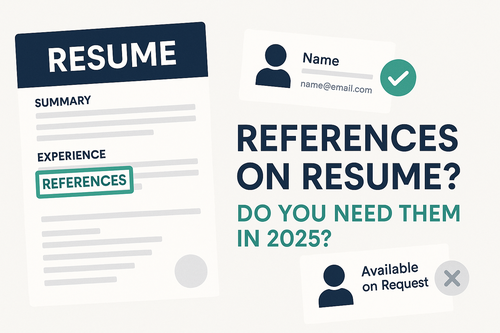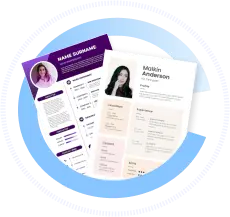References on a Resume: Do You Need Them in 2025?
References on a resume were once a staple, but in 2025 their role has evolved. Most recruiters no longer require references upfront, preferring to request them later in the hiring process. Knowing when and how to include references — or if you should omit them entirely — can streamline your application and improve ATS compatibility.
| What to Do (Short Checklist) |
|---|
| Don’t include references unless requested |
| Prepare a separate reference list document |
| Provide relevant and professional references |
| Use consistent formatting with contact details |
| Share references only after employer’s request |
Who This Guide Is For
This guide suits all job seekers—from novices to veterans—wondering about including references on their resumes. Whether you’re applying for internships, mid-level roles, or executive positions, understanding modern references etiquette ensures professionalism.
References on a Resume — Definition & Purpose
References are individuals who can vouch for your skills, qualifications, and character. Including them directly on a resume was once common to validate applicants, but today they primarily support later-stage interviews or background checks.
Best-Practice Rules (Do / Don’t)
| Do | Don’t |
|---|---|
| Provide references only when specifically asked | List “References available upon request” on your resume |
| Prepare a separate references sheet with full details | Include friends or irrelevant contacts |
| Ask permissions and inform your references | Share references without their consent |
| Keep contact info up-to-date and professional | Overwhelm recruiters with too many references |
Examples by Level & Industry
Example Reference Entry
Jane Smith
Former Manager, Marketing Team
ABC Company
Phone: (123) 456-7890
Email: jane.smith@example.com
Mid-Level Professional
References provide credibility and validate work history without crowding the resume.
Entry-Level / Students
Typically hold off on listing references; have them ready if requested.
How to Customize References for a Job Description
- Identify the most relevant references based on the role or industry.
- Choose individuals familiar with your skills related to the job.
- Brief your references on the position and resume highlights.
Formatting Tips (ATS + Readability)
- Do not include reference details on the resume file itself.
- Create a separate document labeled clearly as “References” or “Reference List.”
- Use consistent formatting: name, title, company, phone, email.
- Keep references concise; 3-5 is standard.
- Save file in DOCX or ATS-friendly PDF for clean sharing.
Checklist & Templates
| References Section Checklist |
|---|
| Are references only provided when requested? |
| Is the separate reference list clearly formatted? |
| Are contact details correct and professional? |
| Have references been informed and agreed to? |
| Are references relevant to the applied role? |
Fill-in-the-Blank Reference Template:
“[Name]
[Relationship/Title], [Company]
Phone: [Phone Number]
Email: [Email Address]”
FAQ
Q: Should I put references on my resume?
A: Generally no, unless the job ad specifically requests them.
Q: What do recruiters want instead of references?
A: Often, they prefer reference checks after the interview stage.
Q: How many references should I prepare?
A: Typically 3-5 professional references.
Q: Can I use personal references?
A: Professional references are preferred; personal references are rarely accepted.


